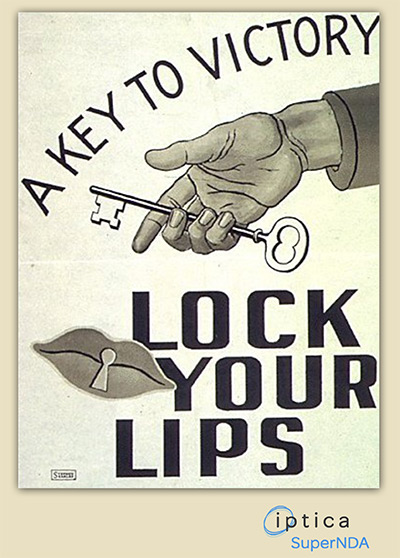




Enter the full name of the person who owns the confidential information.
Enter the physical (not the postal) address. This is for identification purposes only. Alternatively, add the identity / social security number after the discloser's name.
Enter the full name of the person to whom the discloser will disclose the confidential information.
Enter the physical (not the postal address). This is for identification purposes only. Alternatively, add the identity / social security number after the recipient's name.
Describe the confidential information in 5 words or less. For instance, if you were to detail the confidential information in a document, the document title would be similar to the "general category". Do not disclose your confidential information in this description. For example: "cosmetic cream" is good; "cosmetic cream with 5% eucalyptus oil and 2% vitamin E oil" is not so good.
Tick the appropriate subsets. For example, a "cosmetic cream" could include the subsets: technical information and specifications; manufacturing techniques; processes; compositions; chemicals; methods of production; samples; formulae; information regarding materials; results and data; and marketing and business information generally. You can also add your own unique subset, e.g. "FDA data pack". If in doubt, add the subset.
If the recipient wishes to limit the information to which obligations of confidentiality relate, the recipient may require all documents disclosing confidential information to be marked "confidential". This means that casual disclosure of information by the discloser to the recipient will not be covered by the NDA. Ticking "YES" protects the recipient from a deluge of information. If the discloser wishes all information disclosed / made available to be covered by the NDA, the "NO" option should be selected. If we draft a confidentiality on behalf of the discloser, we typically select "NO".
If the recipient wishes to limit the information to which obligations of confidentiality relate, the recipient may wish to limit disclosures only to information contained in documents that the recipient specifically requests in writing. This means that information disclosed to the recipient outside of a written request for such disclosure will not be covered by the NDA. Ticking "YES" protects the recipient from a deluge of information. If the discloser wishes all information disclosed / made available to be covered by the NDA, the "NO" option should be selected. If we draft a confidentiality on behalf of the discloser, we typically select "NO".
If information will be disclosed only after signing the NDA, click "NO". If information was disclosed before signing, click "YES".
If "NO" is selected, the recipient may freely "use" the information, albeit that he may not "disclose" the information to third parties. If "YES" is selected, you may either: (i) restrict all use of the information by the recipient; or (ii) restrict use for a specific purpose, which purpose you may define. Typically, the recipient is permitted to use the information for a specific purpose. If a "purpose" is defined, detail the purpose clearly, e.g. "make a batch of cosmetic cream for testing and evaluation only, with a view to negotiate a licence between the parties for manufacture and sale of the cosmetic cream by the recipient."
At the end of the day, ownership is a question of fact. It is "nice" for a discloser to receive an acknowledgement of ownership in the information from the recipient. However, the recipient may (understandably) be hesitant to make such acknowledgement. We have no strong views in this regard ‐ select either option.
Typically, the "YES" option is selected. If the discloser wishes to impose additional "steps" upon the recipient, this can be dealt with in the next section.
Typically, recipients would be hesitant to select "YES", as the discloser may then impose onerous regimes to protect the information. However, if the information is extremely sensitive, the discloser may from time to time wish to impose additional steps (which steps the discloser communicates to the recipient in writing outside of this agreement). This option is seldom selected.
To add an acknowledgement that the discloser is the owner of all "tangible" material (e.g. electronic files, documents, etc.) that contains confidential information, select "YES". Doing so will enable the recipient to institute an "owner's action" for return of the material (in addition to the contractual action provided for in the next section). Note: ownership in the tangible "material" is different to ownership in the intangible "information". Typically, we select "YES".
To provide for return of material (that includes confidential information) to the discloser upon request / termination of the NDA, click "YES". If the confidential information has longevity and is sensitive, you should select "YES". Even if return of material is provided for, the discloser may elect not to enforce this provision.
If the recipient is required to disclose confidential information to select persons (e.g. auditors, legal advisors, fellow directors, etc.), select "YES". Then, select the categories of persons to whom confidential information may be disclosed, or define your own category. Frequently, disclosure to legal advisors is required.
The NDA automatically excludes information that "is in / falls into the public domain" (i.e. that is not "secret"). You have the option to add other exclusions, i.e.:
Select a suitable term of confidentiality. If the discloser intends to patent the confidential information, publication of the patent should occur within 2 years, which should limit the term of the NDA. We do not like perpetual NDAs.
It is best to use either: the law of the country in which recipient (not the discloser) resides; or the law of the country in which arbitration will occur. The country in which the discloser resides is less relevant.
To speed up enforcement and maintain disclosures in legal proceedings confidential, select arbitration. But, bear in mind that arbitration costs more than taking action through the Courts. If the risk of dispute is high, we suggest providing for arbitration. If arbitration is selected, make the place of arbitration within, and the applicable law that of the discloser's country. We do not favour selecting an arbitration country that is "equally inconvenient" for both parties.
This provision is only available for SuperNDAs. Restraints add another layer of protection, prohibiting certain activities (even if they do not use confidential information). To be enforceable, the: restraint territory; period of restraint; and restrained activities, should be reasonable. If the recipient is comfortable accepting a restraint, it is advisable to include it.
This provision is only available for SuperNDAs. An assignment clause is necessary where the recipient may further develop the confidential information. The assignment clause ensures that all modifications, improvements and additions to confidential information that the recipient may create is assigned (i.e. ownership is transferred) to the discloser. This enables the discloser to add the recipient's developments to the discloser's patent (if filed).








Like our page on facebook: